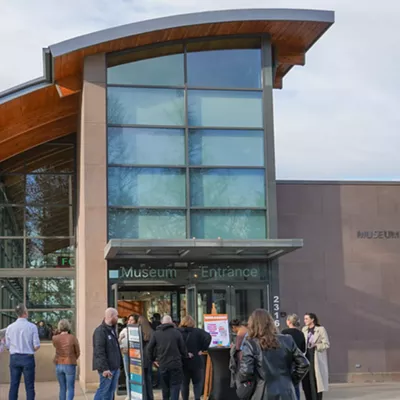Pools are the most costly recreational program in the park system. In rough numbers, each year it costs about $800,000 (net after revenue) to operate six pools for about 100,000 visitors. That's about $8 per person per visit. This also translates to roughly $100,000 per year to operate each outdoor pool and $250,000 for the year-round indoor pool. Over the 25-year life of all the pools, that's $20 million in operating costs that will increase with inflation -- a scary number.
At the same time, park funding is slowly decreasing. By city charter, parks get 8 percent of a shrinking city general fund. With reduced city revenues and increased expenses, the parks department has had to make significant cumulative budget cuts over the past three years, adding up to more than $1 million. Every aspect of the Park and Recreation Department is feeling the pinch: neighborhood centers, senior centers, general maintenance -- everything. This has parks looking hard at pools where there is a lot of cash outflow, and no easy way to cut expenses or add revenue. So far pools have been safe from the budget ax.
People say "live within your means... act like a business... be creative." Over the last two years, the Park Board and its aquatics advisory committee took that urging to heart. By looking around at what other communities are doing, they saw Renton with a new pool with state-of-the-art water park features (slides, sprays, lazy river, wave generator, zero-depth entry). It was so popular that Renton had to turn away customers due to overcrowding. Renton scheduled swimming in full-capacity sessions to get people through efficiently. In its first year of operation, revenues exceeded operational costs by $150,000.
If you could swap out a neighborhood pool that costs $100,000 each year for a contemporary pool that earns $150,000 each year, the gain on the budget balance sheet would be $250,000. If you could do that in two locations, you'd make a $500,000 dent in the $800,000 annual expense. Seems like a creative way to act like a business and live within your means.
Unfortunately it isn't that simple. Spokane has a culture of free swimming. Another chorus of voices giving feedback to parks during five public meetings was one that said, "We can't afford to pay for swimming." When you hear that many times from low-income families and look at the latest poverty statistics for Spokane, paid swimming would close the pool gates to a lot of children.
To produce the same $500,000 dent in expenses, paid admissions at our existing pools would be cost a prohibitive $5 per visit (assuming we'd keep our 100,000 customers). Alternatively, we'd have to sell about 20,000 "family season passes" at $25 to generate comparable dollars -- that's 4,000 passes for each neighborhood pool.
The political reality is that the neighborhoods love their pools. Any proposal that takes away any one of the neighborhood pools will die at the ballot box, even if it is to replace one with a facility that makes "business sense."
So what do we do when the political will of the people doesn't jibe with the financial reality? This is the difficult question we are working hard to answer. We are working with a citizen's advisory committee for aquatics; with an outside consultant team who will do another study of aquatics; with a joint city council study group to determine if a PDA can skin the aquatics cat more cost-effectively -- and we're taking the input of a lot of our citizens who are now paying attention to the issue.
Having studied aquatics issues for 10 years, a common view on the Park Board suggests that Spokane has insufficient public swimming facilities compared to the rest of the nation. Perhaps a lot of our recreational swimming needs are satisfied at local lakes. Nevertheless, in an ideal world we'd have the something like the following program:
1. Maintain and renovate our neighborhood pools for free swimming. Cost range: $12 million to $16 million.
2. Locate splash pads at 15 locations to ensure that no one, young or old, is dry on a hot summer day. Cost range: $2 million to $4 million.
3. Build two new paid-admission pools which include water-park features -- each earning $150,000 per year. Locations: one north, one south. Cost range: $12 million to $16 million.
4. Build a great indoor, year-round facility that would be paid-admission. Such facilities, done right, break even on operating costs. Location: central. Cost: $18 million to $24 million. (Admittedly, this is a big bite, and maybe more than Spokane can swallow, but something a community our size ought to have.)
In the end, we'd have significant capital cost, but we would end up with more facilities and better facilities. The cost to a $100,000 home would be about $30 per year. We would have plenty of free swimming in our neighborhoods, and our annual operating costs would be reduced by approximately $300,000.
Elizabeth Schoedel, Gary Lawton and Steve McNutt are members of the Spokane Park Board. If you have comments you'd like to share, send them to Parks Department Aquatics Coordinator Sarah Ranson at sranson@spokanecity.org.
















